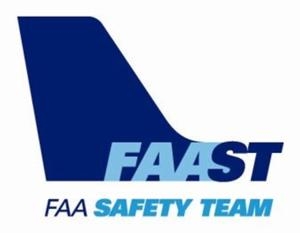Fri, Nov 11, 2016
The FAAST Safety Team Has Issued A Safety Briefing Regarding The Importance Of A Stabilized Approach
AeroSports Update has covered the stabilized approach subject a couple of times in the past, but it’s something that is so important it’s worth reviewing a recent Safety Briefing published by the FAA. While the term ‘stabilized approach’ sounds like something that’s hard to nail down for every approach, that’s simply not the case. It’s a matter of establishing certain standards for your operation and aircraft, and then sticking with them.

In the safety briefing, the FAA explains that focusing on establishing and maintaining a stabilized approach and landing is a great way to avoid experiencing a loss of control. A stabilized approach is one in which the pilot establishes and maintains a constant angle glidepath towards a predetermined point on the landing runway. It is based on the pilot’s judgment of certain visual clues, and depends on the maintenance of a constant final descent airspeed and configuration.
The FAA has also come up with a list of factors of the stabilized approach. They are:
- Maintain a specified descent rate.
- Maintain a specified airspeed.
- Complete all briefings and checklists.
- Configure aircraft for landing (gear, flaps, etc.).
- Maintain the correct altitude levels (e.g., 500 feet for VMC approach; 1,000 feet for IMC).
- Ensure only small changes in heading/pitch are necessary to maintain the correct flight path.
In the safety briefing, the FAA also addresses the need for a go around if the approach is not stabilized. The bulletin says that if the factors listed above are not met, the approach becomes “unstabilized,” which means a go-around for another attempt at landing.
If you choose to continue with an unstabilized approach, you risk landing too high, too fast, out of alignment with the runway centerline, or otherwise being unprepared for landing. These situations can result in loss of control of your aircraft.
Here’s some tips they offer for a stabilized approach:
- Pay attention to the wind in traffic pattern operations, especially on the base to final turn.
- Adjust your stabilized approach guidelines to your type of aircraft based on manufacturer’s guidance.
- Aircraft should be configured for landing at some predetermined distance from the airport or altitude, after which only small corrections to pitch, heading, and power setting should be made.
- If not stabilized, go around.
Most importantly, stabilized approach procedures and go arounds need to be practiced. This can be performed at altitude by using a predetermined altitude as a simulated airport and practicing normal traffic patterns, and approaches, and go arounds.
More News
Circle To Runway (Runway Number) Used by ATC to inform the pilot that he/she must circle to land because the runway in use is other than the runway aligned with the instrument appr>[...]
Aero Linx: National Aviation Safety Foundation (NASF) The National Aviation Safety Foundation is a support group whose objective is to enhance aviation safety through educational p>[...]
At Altitude Of About 250-300 Ft Agl, The Airplane Experienced A Total Loss Of Engine Power On November 6, 2024, at 1600 central standard time, a De Havilland DHC-1, N420TD, was inv>[...]
From 2009 (YouTube Edition): Three Hour Flight Was 'Flawless' -- At Least, Until Mother Nature Intervened For anyone who loves the aviation business, this was a VERY good day. Afte>[...]
Also: AMA Names Tyler Dobbs, More Falcon 9 Ops, Firefly Launch Unsuccessful, Autonomous F-16s The Air Force has begun ground testing a future uncrewed jet design in a milestone tow>[...]
 ANN's Daily Aero-Term (05.05.25): Circle To Runway (Runway Number)
ANN's Daily Aero-Term (05.05.25): Circle To Runway (Runway Number) ANN's Daily Aero-Linx (05.05.25)
ANN's Daily Aero-Linx (05.05.25) NTSB Prelim: De Havilland DHC-1
NTSB Prelim: De Havilland DHC-1 Classic Aero-TV: The Boeing Dreamliner -- Historic First Flight Coverage
Classic Aero-TV: The Boeing Dreamliner -- Historic First Flight Coverage Airborne-NextGen 05.06.25: AF Uncrewed Fighters, Drones v Planes, Joby Crew Test
Airborne-NextGen 05.06.25: AF Uncrewed Fighters, Drones v Planes, Joby Crew Test



